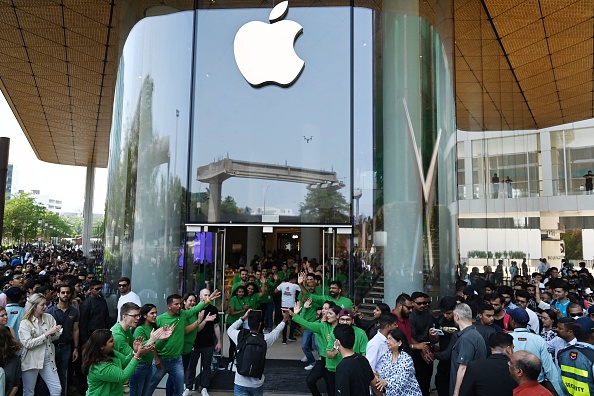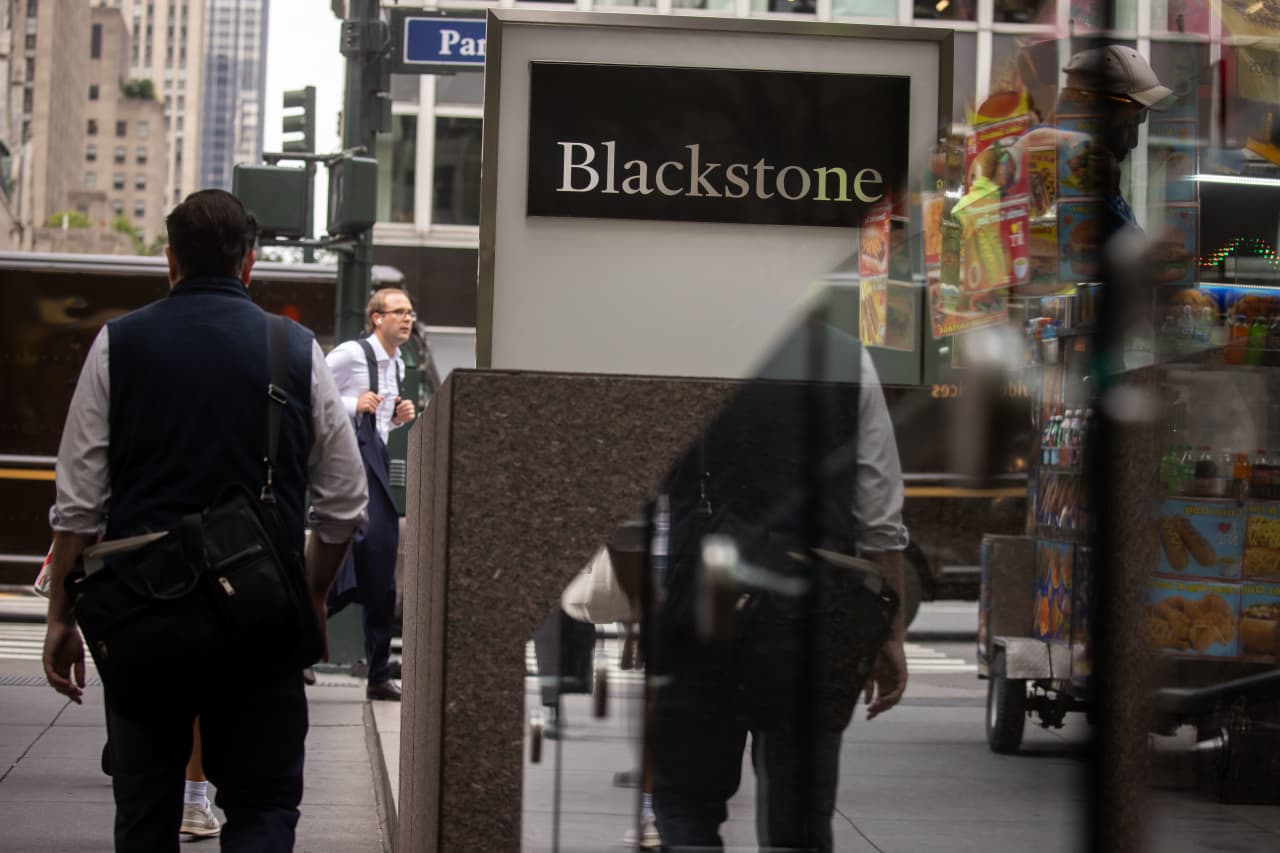Apple Aims to Make a Quarter of the World’s iPhones in India
Supplier Foxconn plans to build more factories and give India a production role once limited mostly to China
Apple and its suppliers aim to build more than 50 million iPhones in India annually within the next two to three years, with additional tens of millions of units planned after that, according to people involved.
If the plans are achieved, India would account for a quarter of global iPhone production and take further share toward the end of the decade. China will remain the largest iPhone producer.
Apple has gradually boosted its reliance on India in recent years despite challenges including rickety infrastructure and restrictive labor rules that often make doing business harder than in China. Among other issues, labor unions retain clout even in business-friendly states and are pushing back on an effort by companies to get permission for 12-hour work days, which Apple suppliers find helpful during crunch periods.
Apple and its suppliers, led by Taiwan-based Foxconn Technology Group, generally believe the initial push into India has gone well and are laying the groundwork for a bigger expansion, say people involved in the supply chain.
Apple is emblematic of a move among companies worried about over dependence on China to move parts of their supply chains elsewhere, most often to Southeast Asia and South Asia. Diplomatic efforts by the U.S. and its allies to block Beijing’s access to advanced technology and strengthen ties with New Delhi have accelerated the trend.
The first phase of a Foxconn plant under construction in the southern state of Karnataka is expected to start operating in April, and the plant aims to make 20 million mobile handsets annually, mainly iPhones, within the next two to three years, said people with direct knowledge of the construction plans.
A further iPhone-producing mega plant is on Foxconn’s drawing board with capacity similar to the one in Karnataka, although the plans are still in a nascent stage, the people said.
Apple has also chosen India as its site for a manufacturing stage for lower-end iPhones to be sold in 2025. In this stage, known as new product introduction, Apple’s teams work with contractors in translating product blueprints and prototypes into a detailed manufacturing plan. Until now, that work was done only in China.
Combined with plans for expanded production at an existing Foxconn plant near Chennai and at another existing plant recently bought by Indian conglomerate Tata, these developments signify that Apple intends to have the capacity to make at least 50 million to 60 million iPhones in India annually within two to three years, said people involved in the planning.
Annual capacity could grow by tens of millions of units after that.
Foxconn indicated its commitment to India by announcing on Nov. 27 that it was investing the equivalent of more than $1.5 billion in the country, money that people familiar with the matter said would include production for Apple. The announcement didn’t mention the iPhone or name specific locations.
Global iPhone shipments last year totalled more than 220 million, according to research firm Counterpoint, a number that has remained steady in recent years. Because almost all iPhones are made in either China or India, China will continue to account for well over half of iPhone output.
Apple has faced challenges in China this year beyond trade tensions with the U.S., including the Chinese government instructing some officials not to use iPhones at work.
“India’s trust factor is very high,” said Ashwini Vaishnaw, India’s information technology minister.
This year, for the first time, India-made iPhones were introduced on the first day of global sales of the latest model, eliminating the lag with China-made phones.
Supply-chain executives say hourly wages are now significantly lower in India than in China, but other costs such as transport remain higher, and labor unions sometimes resist rule changes sought by manufacturers.
In May, the chief minister of Tamil Nadu state, where Foxconn’s flagship Chennai plant is located, said he would withdraw regulations allowing a 12-hour workday, weeks after the state passed an amendment authorising the longer hours. The chief minister, M.K. Stalin, attributed the decision to opposition from labor activists.
Karnataka state has stood by a decision earlier this year to extend the workday to 12 hours, up from a previous limit of nine hours, though companies must seek approval to do so. A state labor official, G. Manjunath, said new rules also allow companies to employ women on overnight shifts without seeking government approval.
After years of battling local-content rules and other red tape, Apple this year opened its first retail stores in India. Abhilash Kumar, an India-based analyst at TechInsights, said the top-of-the-line iPhone 15 Pro Max was selling well in the country, though it costs about $700 more than in the U.S.
Apple is also making progress in India toward building a network of core suppliers, long a strength of Chinese manufacturing. Officials said this week that Japanese battery maker TDK would build a new factory in India’s Haryana state to manufacture battery cells to power Indian-made iPhones. A TDK spokesman declined to comment.
The moves don’t mean Apple and its suppliers are leaving China. Apple Chief Executive Tim Cook has traveled to China twice this year, stressing the country’s importance as a production hub and consumer market. He visited Luxshare, a China-based assembler that is taking a bigger role in the China portion of iPhone assembly.
On social media, Apple has assured Chinese consumers that iPhones selling in authorised channels are made in China. At an industry event in Beijing that Chinese premier Li Qiang attended in late November, Apple’s booth stressed the company’s business with Chinese suppliers.
Foxconn Chairman Young Liu said in November that China would continue to account for the largest share of Foxconn’s capital investment next year.
Liu has visited India at least three times in the past year and a half, meeting Prime Minister Narendra Modi and other officials. People involved in the planning said Modi’s home state of Gujarat in the west was one possible site of a future Foxconn plant. Meanwhile, the company has other projects in the works in the southern half of the country for electronic components and a plant likely to focus on making AirPods for Apple.
The plant in Karnataka state is under construction on 300 acres of land near the airport in Bengaluru, a southern city that is considered India’s tech hub. Officials involved in the planning said Foxconn has secured approval to invest nearly $1 billion in the plant and is seeking the go-ahead to put in an additional $600 million or so.
Combined with other projects, Foxconn’s investments in the state are likely to reach around $2.7 billion, they said.
Some iPhones are also made at a plant near Bengaluru that India’s Tata Electronics agreed in October to buy from Taiwan’s Wistron. Tata Group is the first local company to take on manufacturing iPhones.
“Apple has created an additional spoke in its India strategy by roping in the country’s largest business group—Tata—to be a part of its manufacturing system in addition to Foxconn,” said India’s junior information-technology minister, Rajeev Chandrasekhar.
—Shan Li in New Delhi and Selina Cheng in Hong Kong contributed to this article.
 Copyright 2020, Dow Jones & Company, Inc. All Rights Reserved Worldwide. LEARN MORE
Copyright 2020, Dow Jones & Company, Inc. All Rights Reserved Worldwide. LEARN MORE
This stylish family home combines a classic palette and finishes with a flexible floorplan
Just 55 minutes from Sydney, make this your creative getaway located in the majestic Hawkesbury region.
Continued stagflation and cost of living pressures are causing couples to think twice about starting a family, new data has revealed, with long term impacts expected
Australia is in the midst of a ‘baby recession’ with preliminary estimates showing the number of births in 2023 fell by more than four percent to the lowest level since 2006, according to KPMG. The consultancy firm says this reflects the impact of cost-of-living pressures on the feasibility of younger Australians starting a family.
KPMG estimates that 289,100 babies were born in 2023. This compares to 300,684 babies in 2022 and 309,996 in 2021, according to the Australian Bureau of Statistics (ABS). KPMG urban economist Terry Rawnsley said weak economic growth often leads to a reduced number of births. In 2023, ABS data shows gross domestic product (GDP) fell to 1.5 percent. Despite the population growing by 2.5 percent in 2023, GDP on a per capita basis went into negative territory, down one percent over the 12 months.
“Birth rates provide insight into long-term population growth as well as the current confidence of Australian families,” said Mr Rawnsley. “We haven’t seen such a sharp drop in births in Australia since the period of economic stagflation in the 1970s, which coincided with the initial widespread adoption of the contraceptive pill.”
Mr Rawnsley said many Australian couples delayed starting a family while the pandemic played out in 2020. The number of births fell from 305,832 in 2019 to 294,369 in 2020. Then in 2021, strong employment and vast amounts of stimulus money, along with high household savings due to lockdowns, gave couples better financial means to have a baby. This led to a rebound in births.
However, the re-opening of the global economy in 2022 led to soaring inflation. By the start of 2023, the Australian consumer price index (CPI) had risen to its highest level since 1990 at 7.8 percent per annum. By that stage, the Reserve Bank had already commenced an aggressive rate-hiking strategy to fight inflation and had raised the cash rate every month between May and December 2022.
Five more rate hikes during 2023 put further pressure on couples with mortgages and put the brakes on family formation. “This combination of the pandemic and rapid economic changes explains the spike and subsequent sharp decline in birth rates we have observed over the past four years,” Mr Rawnsley said.
The impact of high costs of living on couples’ decision to have a baby is highlighted in births data for the capital cities. KPMG estimates there were 60,860 births in Sydney in 2023, down 8.6 percent from 2019. There were 56,270 births in Melbourne, down 7.3 percent. In Perth, there were 25,020 births, down 6 percent, while in Brisbane there were 30,250 births, down 4.3 percent. Canberra was the only capital city where there was no fall in the number of births in 2023 compared to 2019.
“CPI growth in Canberra has been slightly subdued compared to that in other major cities, and the economic outlook has remained strong,” Mr Rawnsley said. “This means families have not been hurting as much as those in other capital cities, and in turn, we’ve seen a stabilisation of births in the ACT.”
This stylish family home combines a classic palette and finishes with a flexible floorplan
Just 55 minutes from Sydney, make this your creative getaway located in the majestic Hawkesbury region.






















